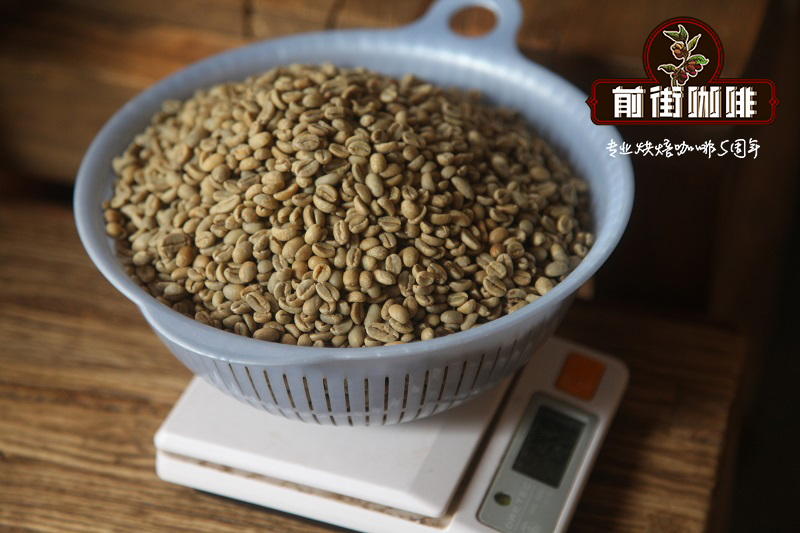The relationship between the growth altitude of coffee and the flavor of coffee

Professional coffee knowledge exchange more coffee bean information please follow the coffee workshop (Wechat official account cafe_style)
The relationship between the altitude of coffee growth and coffee flavor
Coffee beans are generally graded according to their size, defect rate and altitude. The size and defect rate of raw beans are easy to understand. Many people do not quite understand why some producing areas use the altitude of coffee beans as the basis for grading. Many coffee sellers also sell their coffee at high prices because they boast that their coffee is high altitude coffee. Why?
First of all, we should realize that the influence of geographical location on the flavor of coffee beans is important.
All coffee grows in the tropics, in fact, altitude has no direct effect on coffee, but altitude can affect the growth, development and quality of coffee through the redistribution of meteorological elements (temperature, light, heat, wind speed, rainfall, etc.). The tropical area between the Tropic of Cancer and the Tropic of Cancer produces the world's truly high-quality Arabica coffee. Central and South America, South Asia and some Pacific islands, and south-central Africa are also the most important coffee-growing areas in the world. The 3000-6000 ft (90-2000 m) high altitude provides ideal conditions for coffee to grow: an average frost-free climate of 60-70 degrees Fahrenheit (15-21 ℃) throughout the year, about 80 inches of moderate rainfall, and abundant sunshine. Coffee beans in cold mountain areas grow more slowly, and the slow ripening process makes coffee beans have higher sugar content, more interesting flavor and more mellow flavor. High elevations have a high displacement and produce more concentrated fruit flavors, and the best Arabica coffee-growing areas have very fertile soil, often in volcanic areas.
Coffee beans grown at high elevations are hard, dense and have the potential to give full play to their special flavor. The really amazing coffee growing areas are at high elevations, and these beans are only picked carefully during the mature season. Generally speaking, with the increase of altitude, the aroma of coffee becomes more and more prominent and unique (see figure). From the temperature and sweetness of Brazilian beans at 3500 feet to the soaring taste of Ethiopian coffee beans above 6000 feet, altitude will give coffee beans a more complex and subtle taste.
The rating of Central American coffee is based on the altitude at which the coffee grows.
Mexico, Honduras, Haiti and other countries are highly graded: Strictly High Grown (extremely high mountain bean, referred to as SHG), followed by High Grown (high mountain bean, referred to as HG)
Mexico is called Altura, which means "high" in Spanish, indicating that it is high-altitude coffee; Papua New Guinea appends the name "Mile High" to mark coffee beans grown in the highlands and mountains.
On the other hand, due to the cold climate and slow growth of coffee in alpine areas, the density of raw beans is higher and the texture is harder, and the more mellow and aromatic the coffee is, and it has a supple sour taste; on the other hand, in lower areas, the density of raw beans is smaller and the texture is less hard, the worse the quality of coffee is, so some people classify it as "hardness".
Guatemala, Nicaragua, El Salvador, Costa Rica and other countries are classified as follows
Grade growth height grade abbreviation
Strictly Hard Bean (extremely hard beans) about 1372 Murray 1524m SHB
Good Hard Bean (high hard bean) is about 914 GHB 1372m.
Hard Bean (hard beans) is about 610 HB (914m)
Pacific (Pacific Coastal area) about 300m Pacific 1000m
Practice shows that the effect of altitude on quality has exceeded that of genotype on quality. Viagra personally believes that the classification of coffee beans based on altitude is more scientific and reasonable than simply grading by size and defect rate, because to a certain extent, altitude classification is indirectly graded by taste, and beans with low altitude grow rapidly and large. the defect rate can be changed by selection, but the altitude cannot be changed.
According to the measurement, compared with the same kind of coffee beans, the higher the altitude, the greater the acidity and the smaller the concentration; on the contrary, the smaller the acidity, the greater the concentration. Therefore, for friends who like sour taste and do not require high concentration, high-altitude coffee is very suitable for you, it is your good coffee; for friends who do not like sour taste and require high concentration of coffee, the higher the altitude, the more unsuitable for them. No matter how high its quality is, it is also a waste product for itself. Therefore, the choice of altitude should be based on personal taste.
Secondly, how do we know if the coffee we buy is really high altitude? Coffee growth and reproduction has specific requirements for environmental conditions, sexual preference for calm wind, cool, shaded or semi-shaded environment. In other words, coffee can not be grown and produced in any environment. In other words, coffee production is regional. Most of the coffee producing areas in the world are distributed in tropical plateaus or high-altitude mountain areas. The heat in the equatorial area is high and can be planted to about 2000 meters above sea level; the heat on both sides of the Tropic of Cancer is relatively low, mostly below 1000 meters. In China, it is mainly distributed in Yunnan. Therefore, when making coffee well, we also need to understand the geography, climate and environment of the coffee producing area. Do more and drink more in order to better understand the different flavors of coffee.
In addition, the highest quality of coffee beans is called extremely hard bean SHB, which is at an altitude of more than 1370 meters. This high-altitude planting environment makes coffee beans grow slowly and gradually form a high-density structure of coffee hard beans. Growing in such a severe environment, the coffee flavor is higher in acidity, aroma and flavor, so the beans at high altitude are usually more stable than those from lower altitude, and their personality performance is more distinct.
Important Notice :
前街咖啡 FrontStreet Coffee has moved to new addredd:
FrontStreet Coffee Address: 315,Donghua East Road,GuangZhou
Tel:020 38364473
- Prev

Colombian National Coffee introduces Colombian Coffee Flavor
Professional coffee knowledge exchange more coffee bean information please follow the coffee workshop (Wechat official account cafe_style) Colombia is rich in coffee production, has always lost only to Brazil, is the second largest coffee producer, however, between 2003 and 2007, it was overtaken by Vietnam and is now the world's third largest coffee producer, and more than 2 million people in Colombia rely on coffee production.
- Next

Is coffee still divided into tree species? what are coffee tree species? what are the specific categories of coffee?
Professional coffee knowledge exchange more coffee bean information Please pay attention to the species and characteristics of coffee trees in the coffee workshop (Wechat official account cafe_style) Coffee belongs to the Genus Coffea family of Rubiaceae in plant taxonomy, and there are at least a hundred coffee varieties below. Coffee trees are only suitable for planting in the tropics or subtropics. Arabica is the native species of coffee today.
Related
- Beginners will see the "Coffee pull flower" guide!
- What is the difference between ice blog purified milk and ordinary milk coffee?
- Why is the Philippines the largest producer of crops in Liberia?
- For coffee extraction, should the fine powder be retained?
- How does extracted espresso fill pressed powder? How much strength does it take to press the powder?
- How to make jasmine cold extract coffee? Is the jasmine + latte good?
- Will this little toy really make the coffee taste better? How does Lily Drip affect coffee extraction?
- Will the action of slapping the filter cup also affect coffee extraction?
- What's the difference between powder-to-water ratio and powder-to-liquid ratio?
- What is the Ethiopian local species? What does it have to do with Heirloom native species?

